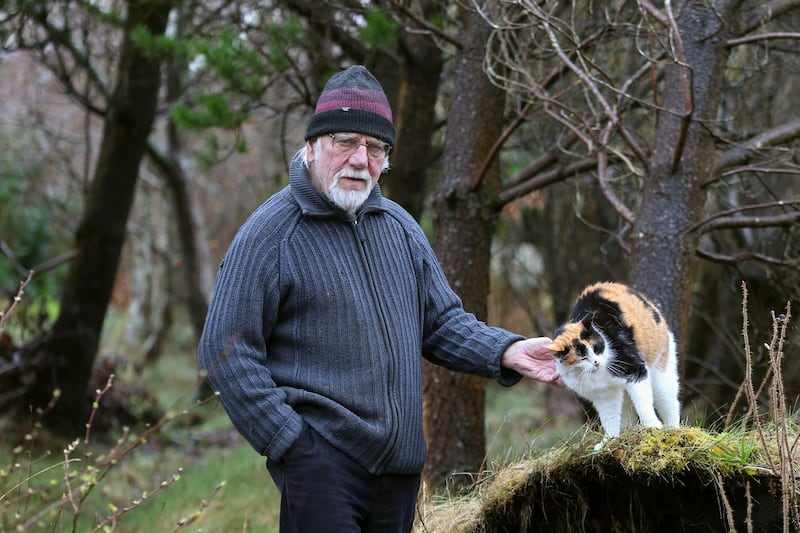Midway through Nothing Ever Just Disappears, Diarmuid Hester’s remarkable and expansive survey of modern queer lives, we encounter the author aboard a ferry as it prepares to dock at Jersey. The politically conservative Channel Islands would on the face of it appear to have little to offer an historian of queer culture, but Hester is intent on illuminating the work and legacy of the surrealist writer, sculptor and self-portraitist Claude Cahun, who left France for Jersey in 1937 to continue exploring a life of alternative identities.
Following the German invasion of the Channel Islands in 1940, Cahun used her talents and imagination in acts – small, given the space in which she found herself, but courageous and deeply imaginative – of resistance against the Nazi occupation: she was eventually sentenced to death, although this was commuted before the liberation of the islands in the closing days of the war in Europe.
Hester shows us in compelling terms how Cahun fused life and work with space itself to create a new kind of freedom in Jersey, a recasting and widening of place on this ostensibly claustrophobic scrap of land in the English Channel. He describes a Cahun photograph entitled Je tends les bras, in which a pair of hands – Cahun’s own hands – stretches from within a hollow, glistening pillar of Jersey granite: ‘The hands […] seem simultaneously to resist, embrace, and gather up an unseen partner. In this photograph, Cahun has inserted herself into the landscape of Jersey.’
Intrinsic to the power and beauty of this book are Hester’s own voice, story, and powers of observation
Perhaps it takes a queer eye, Hester suggests, to note the effects of this fusion of self and place in Cahun’s work, this revelatory link between the fabric of nature and the human form, this reimagining of ecology, this longing for connection in an overwhelmingly heteronormative world in which identity and individuality are harshly coded and policed. ‘By pushing her fleshy body through the cold, hard granite,’ Hester writes, ‘and making a hybrid form on film, [Cahun’s] work reconciles humanity and nature, while gently making fun of the distinction the modern world draws between them.’
Protein: Are we eating enough of it? And is ‘high protein’ branding just a fad?
Cameron Diaz: ‘I left movies because I wanted to live my life differently. We started our family, and that was all I wanted to do’
Aoibhinn Ní Shúilleabháin: ‘I mourned friendships for too long that were actually past their time’
‘The phone would ring and it would be Mike Scott from the Waterboys or Bono from U2. Everyone wanted to talk to my father’
Intrinsic to the power and beauty of this book are Hester’s own voice, story, and powers of observation. As the ferry docks at Jersey, he describes a group of men in the cabin. They are drunk and aggressive, and busy themselves hurling ugly language at the rest of the passengers – and Hester notes that while this form of behaviour can still, on occasion, pass as intrinsically and authentically masculine, it is of course just another form of projection, a performativity that depends for its success on social consent. And he adds that it never applied to him, or to his life and experience: it is ‘all an act; all gender is learned behaviour – something social and cultural, not natural and biological.’ This clear understanding of the provisionality of identity propels this book forward.
The narrative opens on the shingle of Dungeness, where Derek Jarman’s garden and house at Prospect Cottage stand facing into a scouring wind. Jarman, who required no lessons in queering a life, used this place – specific, extreme, otherworldly – to show how existence can be reimagined, reconnected and remade. Hester adopts this same definition of queerness in its broad sense: as embracing difference and distinctness from social, economic, cultural, and gender norms; and he shows this same sensibility at work in each of the seven ‘hidden histories’ collected in this book.
The results are tremendously absorbing. Hester suggests, for example, that the career of French-American singer, dancer and actor Josephine Baker transformed the culture and society of Paris at least as much it did the life of Baker herself; and that in particular Baker’s blackness and bisexuality – in other milieux, marginalised and forbidden modes of being – were necessary and vital threads of identity for Baker and Paris. For the New York film-makers Jack Smith, the standard organisation of life into separate spheres of waking and sleeping, work and leisure, reality and fantasy, was the very opposite of the truth: for Smith, life instead involved the melding of these spheres into alternatives space in which the real and fantastic walk hand in hand.
The great gift of this book is to offer access to optimism, in these late and shadowed days. It provides a glimpse, a possibility for transformation, and an escape from the closed and shuttered spaces of late capitalism; and it suggests that we may be able to save ourselves by rethinking our lives and imaginations, our societies and systems – by queering our world. From inside Prospect Cottage, a voice calls to Hester as he stands in the evening twilight: ‘You’re not going to stay out there all night, are you? Come and join us, baby.’




